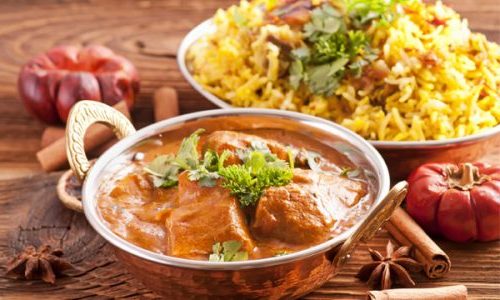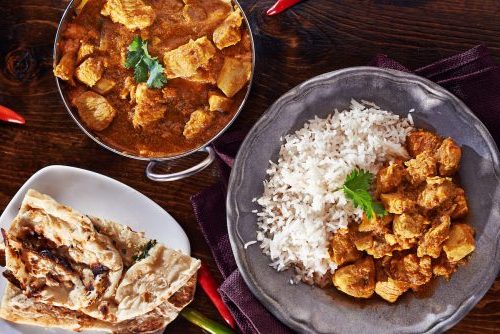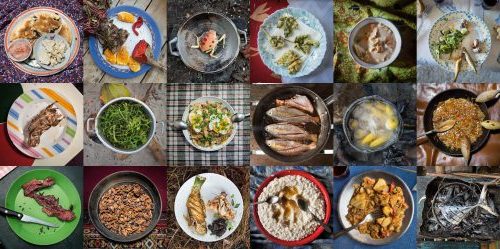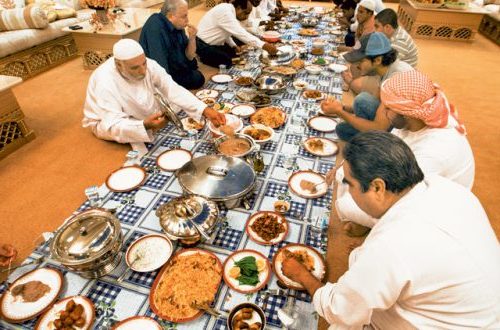Food, in fact, good food, is what we all endeavor our best to get help with. In our entire annual cycle, comprising of 12 months, consuming healthy and nutritious food is our logical objective. Our all bread and butter aimed at its best utility is surely the most crucial part of our expenditure lineup. With Ramadan 2019 lying just around the corner, its preparations hold unique importance in our culture. Being also the most sacred month of the Muslims the world over, it carries special blessings and auspiciousness for the faithful.
Eating Norms That We Generally Follow Round Our 11-Month Calendar
What is the quality of a true Pakistani? Well, they have taste buds that are so wanted to their traditional spicy food that they simply cannot go without it for long. However, what makes eating habits unique is the experience that is associated with it. There are certain habits that almost all of us foodies have been known to possess, in creating such lively experiences.
On a general basis, meat in any form is the staple, proper food while the vegetables merely serve the purpose of salads. We Pakistanis believe that the real flavor of any main course dish comes from meat. What is truly difficult for us is to gulp down a dish consisting only of vegetables. This is perhaps the last thing we can think of, to provide us a satisfying meal. And of course, there can be no meal for us in the absence of “roti” or “chawal” with the meat curry.
Typical Pakistani Food: Second Helping Is Always Welcome!



Source: Brandsynario
But, how do we usually end our main course with? Yes, you’ve guessed it right! We as a nation consider dessert to be a serious issue that follows almost our every main meal. Despite all the deadly sugar content usually present, we still opt to indulge in them quite willingly, they being unbeatable in taste.
People thronging in the urban centers, especially, follow tea or “chai” religiously. Come the chilly days and tea or coffee are literally consumed in far more quantities than water itself. While all year round, hot “chai” is served as the primary beverage in all households.
And, let’s not overlook the evening times in our country. A time that calls for light snacks and refreshments to appease that tingle caused by “false” hunger alarm. For the kids, evenings are never short of snacks comprising food items that are quick to prepare, spicy, and usually fried. These snacks may be prepared at home or often prepared and sold by hawkers along the roadside.
In our social setup, dinner is considered the main meal of the day since the entire family usually gathers for the occasion. And essentially, we tend to consume maximum quantities of this night meal than any other time of the day. This practice is deemed unhealthy and unsound by nutritionists the world over. Dinner having a special place in our 24-hour day, the food helped with usually requires more preparation time and techniques to make it more savory.
A Routine Pakistani Dinner: Foodie’s Paradise!



Source: George Fox University
So, all in all, our “concise” 11-month calendar year is generally spent in a machine-like manner, following scheduled meals thrice a day. The breakfast, lunch and then dinner, with occasionally intermittent evening time light refreshment. It’s not that our timely meals warrant a healthy living; the nutritional value of each foodstuff provides for the desired wellbeing.
Ramadan 2019: Time For Meal Charts, Healthy Diet Plans
For us Muslims, Ramadan is the most sacred month of the Islamic calendar and our entire community. Ramadan’s sanctity being undeniable, the blessed month brings forth all graciousness and goodness. It is an apt time for Thanksgiving and returning to our Creator whatever is possible through reaching and helping out the destitute. Moreover, this sacred time of the year demands from us patience and perseverance that come out of firm faith and strong character.
Since Ramadan is featured with the acts of self-catharsis and self-control, the consumption of eatables herein is no exclusion. Ramadan 2019 falling in the scorching summers in Pakistan, fasting would require proper and precise monitoring of one’s physical conditions. The intensely dried out weather is sure to cast a telling effect on fasting individuals, especially the ones moving outdoors.
Self-Catharsis And Self-Control: Following The True Spirit Of Ramadan



Source: IslamiCity
So, how would you ensure a perfect fast, dawn to dusk? Surely enough, chalking out an appropriate diet plan that imparts the required energy and vitality levels all day long. You need to fast religiously as well as maintain your physical wellness medically. Now, achieving both ends can be a routine possibility if healthy choices are made right from day one. A well-balanced diet that is limited in quantity, but serves its desired purpose should be your target during the upcoming sizzling Ramadan 2019.
Fairly enough, it can be challenging to obtain the proper nutrients during the Holy Ramadan time and to avoid certain health risks. It has been shown that fasting may give rise to dehydration, headaches, low blood sugar levels (hypoglycemia), dizziness and fatigue in absolutely normal people. However, it is possible to eat healthily during Ramadan and have sufficient energy to last you throughout the day.
A Healthy Ramadan Routine: Balanced Health With Balanced Meals
First and foremost, what we eat besides our fasting hours is crucial to our wellbeing. A person is required to put a great deal of thought into the type and quantity of food they consume throughout the holy month. As a rule, the diet should be a simple meal and not an overloaded feast. It should not differ considerably from your normal daily diet. To maintain a balanced and nutritious diet, a fasting person should consume foodstuff from all the prescribed major food groups. The food commodities are to be equally distributed between the two meal times.
A Generalized Ramadan 2019 Menu: Treading The Health Pathway



Source: Pinterest
According to world-renowned dietitians and nutritionists, the major food groups are classified as beneath:
- Bread and cereals
- Fruits and vegetables
- Foods containing carbohydrates and fat
- Dairy products such as milk, butter, and cheese
- High-protein stuff such as meat, fish, and chicken
Our Ramadan fast consists of 2 primary meals that are mandatory for the act. The fasting cycle begins with the “Sehri” (pre-dawn meal) and culminates in “Iftaar” (post-dusk meal). If an ideal diet plan is to be followed in all spirit, it should be readied as under:
Iftaar Time In Pakistan: A Friendly Gathering Sees Through Breaking Their Fast



Source: Pinterest
- For Sehri time, foods that should be preferred have high fiber content and complex carbohydrates. Fiber averts constipation while complex carbohydrates are enriched with energy that is released at a slow pace. And, high quantities of water and other fluids, except caffeinated beverages, shouldn’t be missed out either.
- For Iftaar time, it is traditional to break the fast with dates and water which rehydrate and rejuvenate via their sugar and salt content. Iftaar is actually the time of abstinence rather than gluttony. Essentially, all deep-fried items should be avoided at best. Their ideal replacement is the baked or grilled option as their perfectly working counterparts.
The month of Ramadan is a great opportunity to break apart the chains of bad eating habits. A balanced diet containing ample quantities of nutrients, salts, and water is vital to normal body functioning. This routine can help improve your overall health and maintain that behavior. It usually ends up in a lifestyle that can be continued even after the fast has been seen through.
Read Also: Largest Mosques From Around The World















